Art Exploration of the Month: “In the Realm of Three Inland Seas”
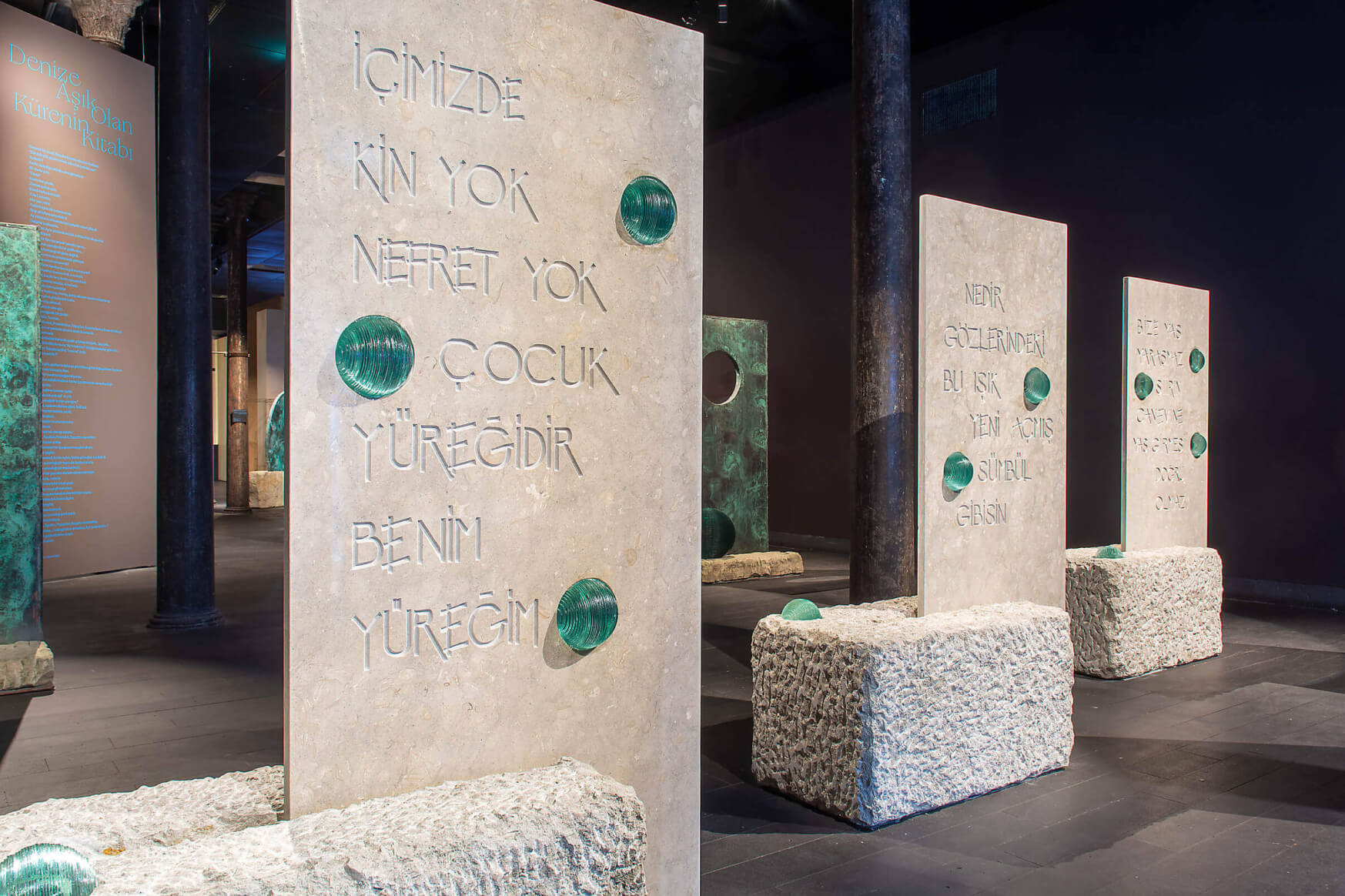
Handan Börüteçene, Sappho’s Lost Words, 2002-2023 from the exhibition In the Realm of Three Inland Seas. Photo: Mustafa Hazneci, Salt.
Handan Börüteçene’s exhibition, “In the Realm of Three Inland Seas,” named after the cultural heritage and geographical features of Anatolia and Thrace, unfolds a narrative that transcends time. Hosted by Salt Beyoğlu, the exhibition is a comprehensive compilation of the artist’s works, which have been interwoven with nature, history, and archaeology for over forty years. This special exhibition, taking viewers on a journey of exploration from the past to the present, is under scrutiny in Hitit Mod’s Art Exploration of the Month section.
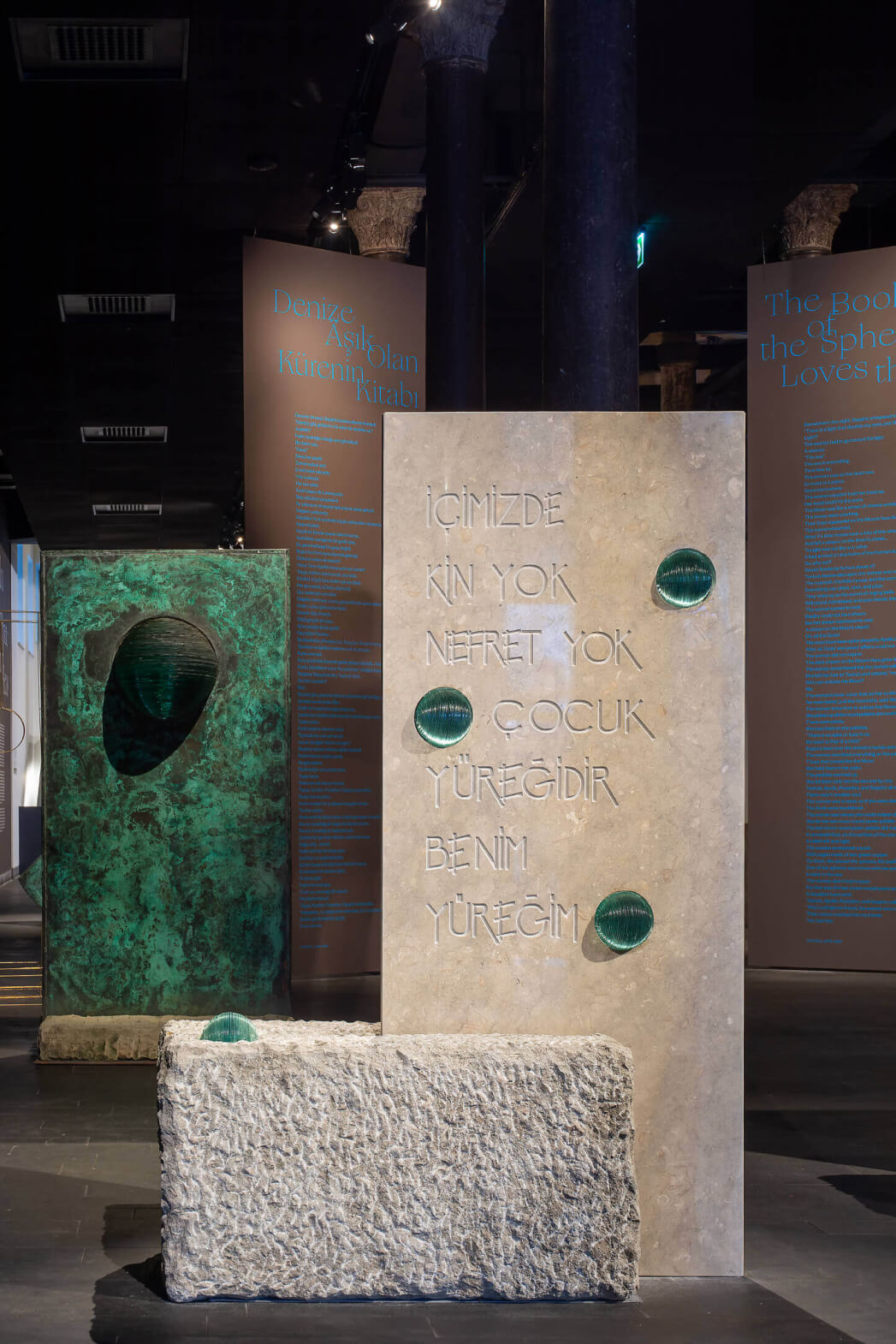 Handan Börüteçene, Sappho’s Lost Words, 2002-2023 (detail) from the exhibition “In the Realm of Three Inland Seas”. Photo: Mustafa Hazneci, Salt.* |
İçimizde Kin Yok (There’s No Grudge In Us)
Nefret Yok (No Hate)
Çocuk Yüreğidir (A Child’s Heart)
Benim Yüreğim (Is My Heart)*
The exhibition highlights works spanning from the artist’s early projects for her graduation, including her award-winning installation “Break/See” (1985) and the “terracotta” series displayed at Urart Art Gallery in 1987, to her large-scale sculptures installed in public spaces in Istanbul. Tracing an artistic practice that confronts the challenges of memory loss, the exhibition allows for a comprehensive exploration of Börüteçene’s passions, the themes she delves into, the issues she persistently pursues, and the new developments in her production. The columns featuring “Sappho’s Lost Words” (2023) that welcome the viewer in the Forum at the entrance of Salt Beyoğlu are clear examples that express the exhibition’s ambiance.
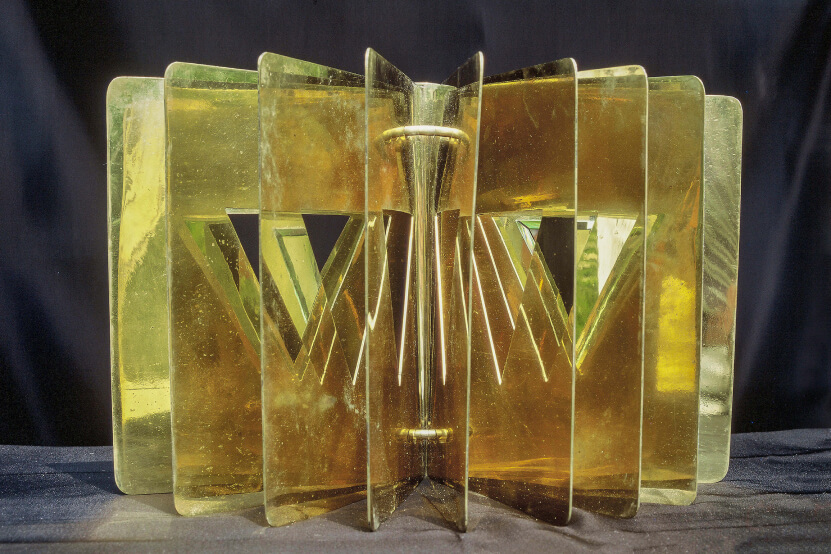 Handan Börüteçene, “Extraordinary Sacred Book,” 1989. By courtesy of the Artist. |
Born in Istanbul, Handan Börüteçene has been captivated by the extensive history and multi-layered visual richness of the city where she was born and raised from an early age. The archaeology books she discovered in her father’s library and family visits to the Istanbul Archaeology Museums during her childhood crystallized the artist’s curiosity and excitement about the past. The colorful crystal beads, sequins, and pearls scattered around while her mother, Hesna Hanım, an embroidery master, was working, further strengthened Börüteçene’s relationship with color and form.
 Handan Börüteçene, a sculpture from the exhibition “Pass Through Every Sea: Beyond Is Silence And Secrecy” at Hagia Irene, 1991. |
The enthusiasm of Börüteçene, who studied ceramics at the Istanbul State Academy of Fine Arts, to explore the historical layers buried in the soil led her to engage in her initial archaeological fieldwork in the ancient city of Arykanda. Following her graduation, the artist relocated to Paris in 1981, where she spent two years working in the sculpture studios of Georges Jeanclos and César (Baldaccini) at l’École nationale supérieure des Beaux-Arts. During this period, she hosted her inaugural solo exhibition in Paris and continued to participate in significant exhibitions organized in Istanbul.
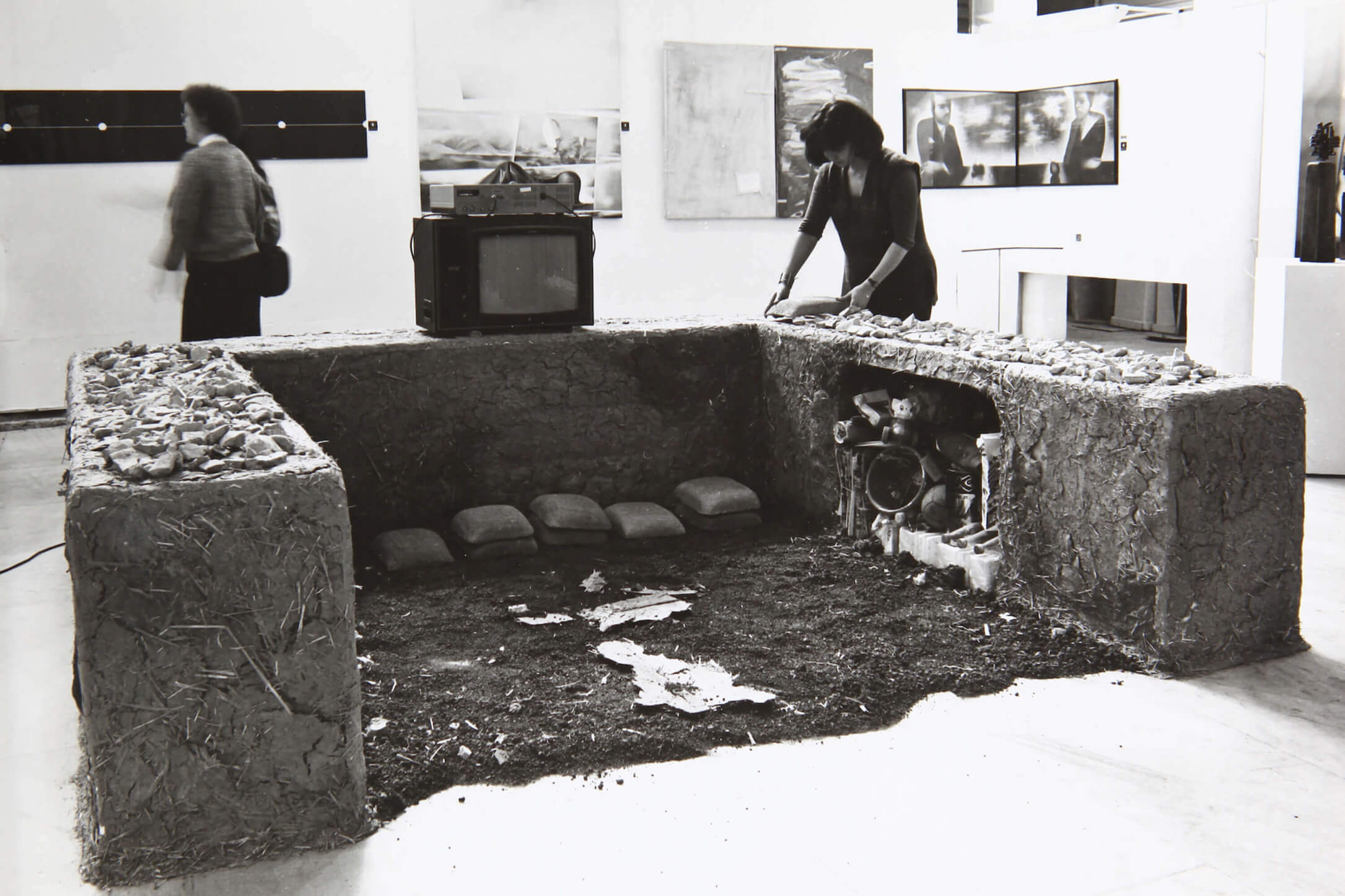 Handan Börüteçene’s installation “Break/See” at the 5th exhibition of “New Trends in Art” (Mimar Sinan University), 1985. By courtesy of the Artist. |
The artist participated in the 5th “New Trends in Art” exhibition (1985) at the Istanbul Art Festival organized by the Academy with her installation “Break/See,” which holds a significant place in Turkey’s understanding of contemporary art. Drawing inspiration from the Neolithic dwellings of Hacılar and Çatalhöyük, the artist constructs a mud-brick building and fills its interior with technological tools, newspapers, banknotes, and various everyday objects, inviting viewers to break the cuneiform tablets. Following this work, Börüteçene examined the deteriorating urban landscape in alignment with the cultural experiences of the 1980s and incorporated two significant themes, exploring their intertwinement in her artistic practice: communication across cultures, epochs, species, and people, and the “memory of the earth” containing the knowledge arising from this communication.
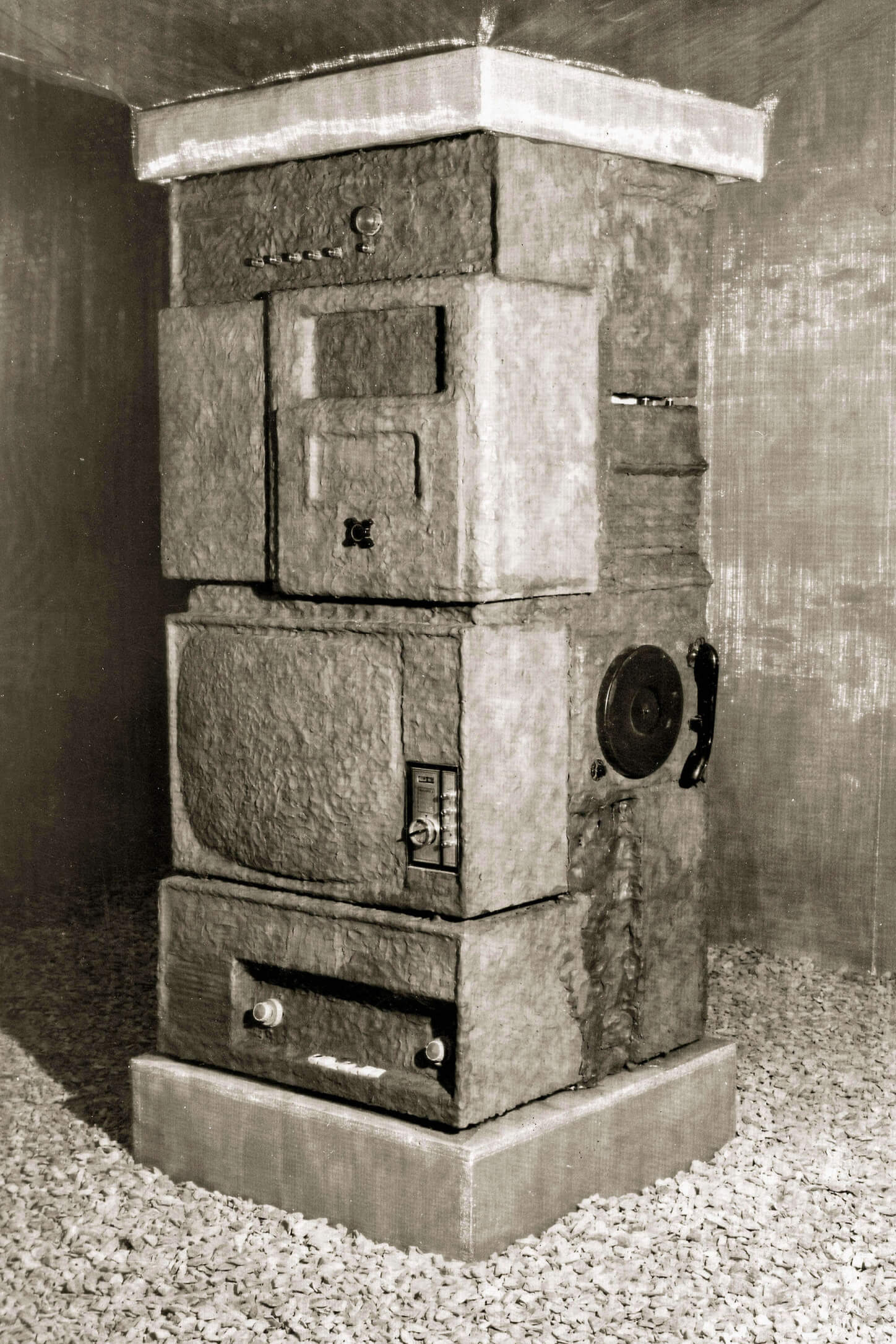 Handan Börüteçene, “Mass Miscommunication Tools etc etc zzzz…..bızzzz” (1987), 1st International Istanbul Contemporary Art Exhibitions, 1987. By courtesy of the Artist. |
In works such as “The Kitchen Army” (1984), “The Ironers” (1985), “Do Not Break/See” (1985-1987) and “Mass Miscommunication Tools etc etc zzzz…..bızzzz” (1987), the artist employed images, objects, texts, and forms spanning from the Neolithic era to the present day to establish connections between the past, present, and future. In the series “Memory of the Earth” (1995), she explored the concept of cultural continuity through the Anatolian flora that has endured since the Hittite era: crafting “coffers of memory,” the artist combined plants and seeds she collected herself from the Kızılırmak river area, guided by the Hattusa tablets, with soil from Troy and Aeolis.
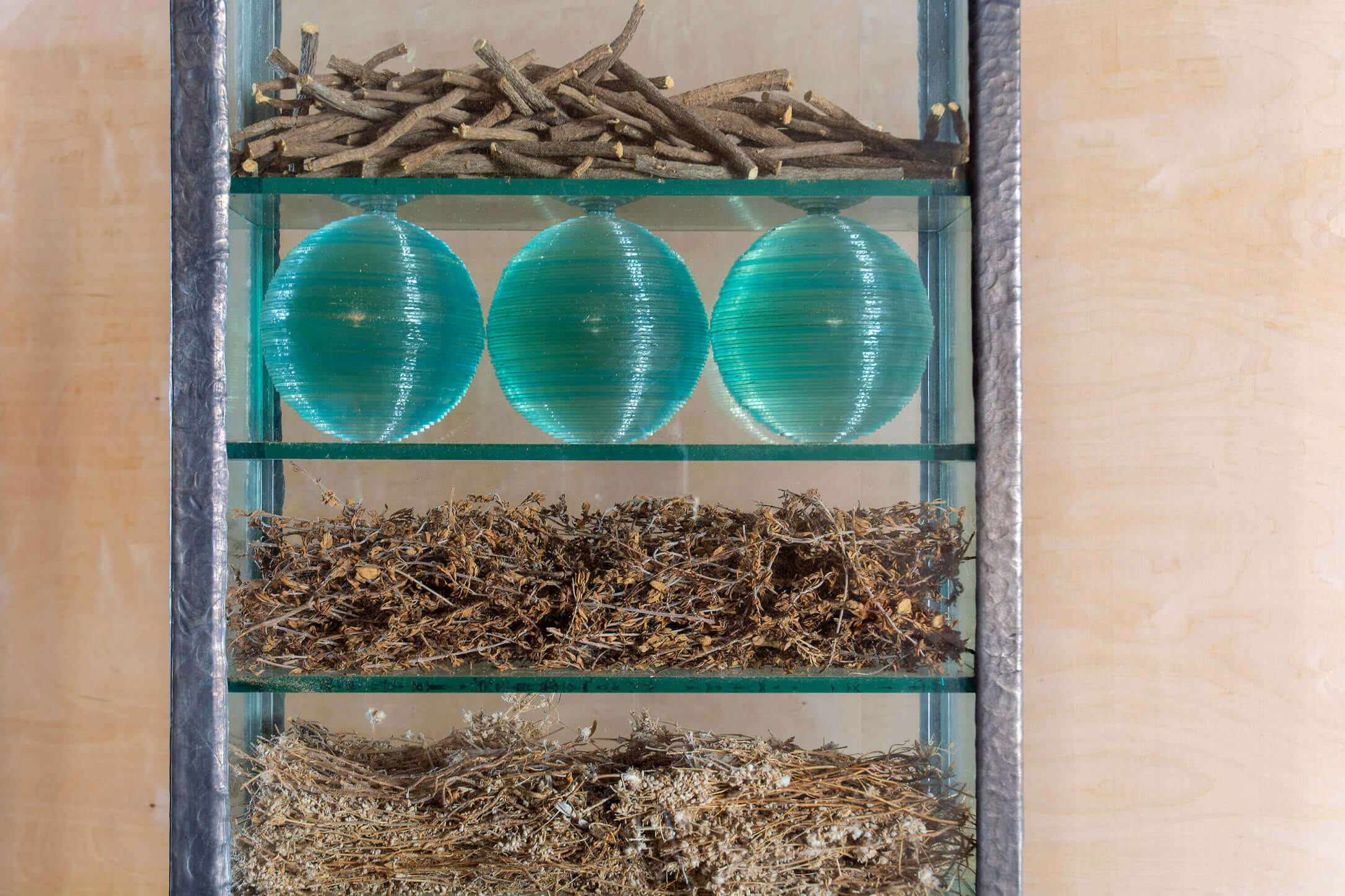 Handan Börüteçene, “Memory of the Earth,” 1995 (detail). Photo: Mustafa Hazneci (Salt), 2023. |
For Börüteçene, the concept of the “memory of the Earth” also encompasses the artist’s personal history. As her realm of knowledge expanded, her connections with figures from past eras—such as Sumerian Ludingirra, Hittite Teshub, Sappho of Lesbos, and Moero of Byzantium—grew more extensive. She documented her dialogues with these companions in her journals, which she carried from her Paris studio to Venetian cafés and the Mediterranean coasts during her travels. A selection of these notes, comprising quotes, drawings, scribbles, and poems, has transformed into “logbooks” for the works “The Book of the Sphere That Loves the Sea” (1990) and “I Remained Buried Within Myself” (1999-ongoing). Previously available only in a few catalogs, these “logbooks” now illuminate Börüteçene’s artistic thought process as they accompany the works in the exhibition.
Handan Börüteçene’s exhibition “In the Realm of Three Inland Seas” not only establishes connections between the past and the present but also delves deeply into the concepts of memory and knowledge. The themes in her works artfully intertwine communication across ages and the memory of the earth, taking viewers on an intellectual journey.
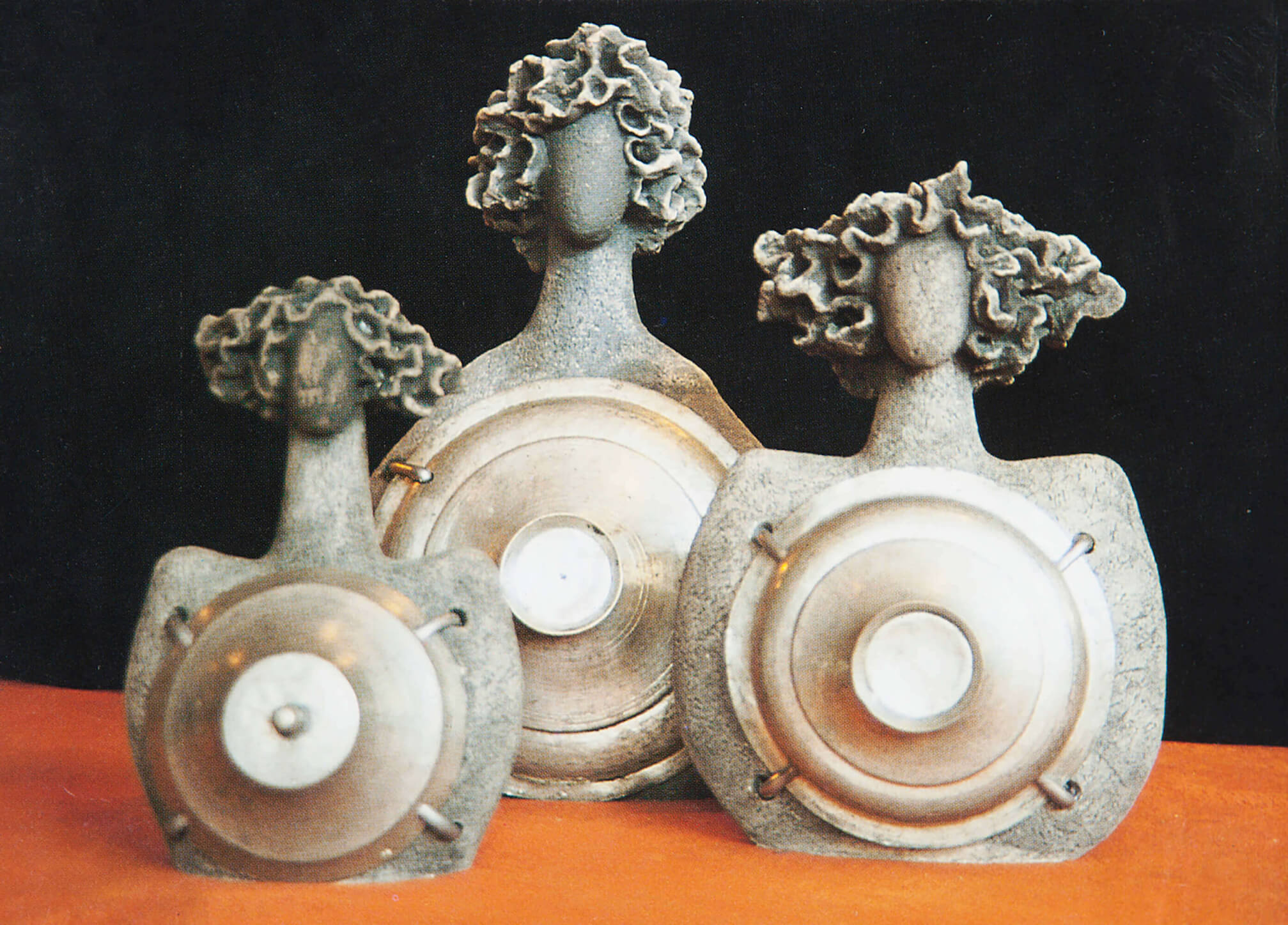 Handan Börüteçene, three sculptures from the series “The Kitchen Army,” 1984. By courtesy of the Artist. |
Handan Börüteçene’s life, marked by shifts between Istanbul, Paris, and Kaş over the years, has resulted in an increasing physical, if not intellectual, distance from her works. A group of works that entered collections or were gifted to friends by the artist years ago is lost, untraceable, or deteriorated for various reasons. Her sculptures in the open spaces of Istanbul have become distant from their original purposes or are abandoned to their fate as the uses of the spaces change.
The exhibition “In the Realm of Three Inland Seas” underscores the neglect of cultural heritage and artworks in Turkey by emphasizing lost works. By drawing attention to the significance of unrecorded, forgotten, and lost works, it sheds light on the negligent attitude towards the protection of art and cultural heritage.
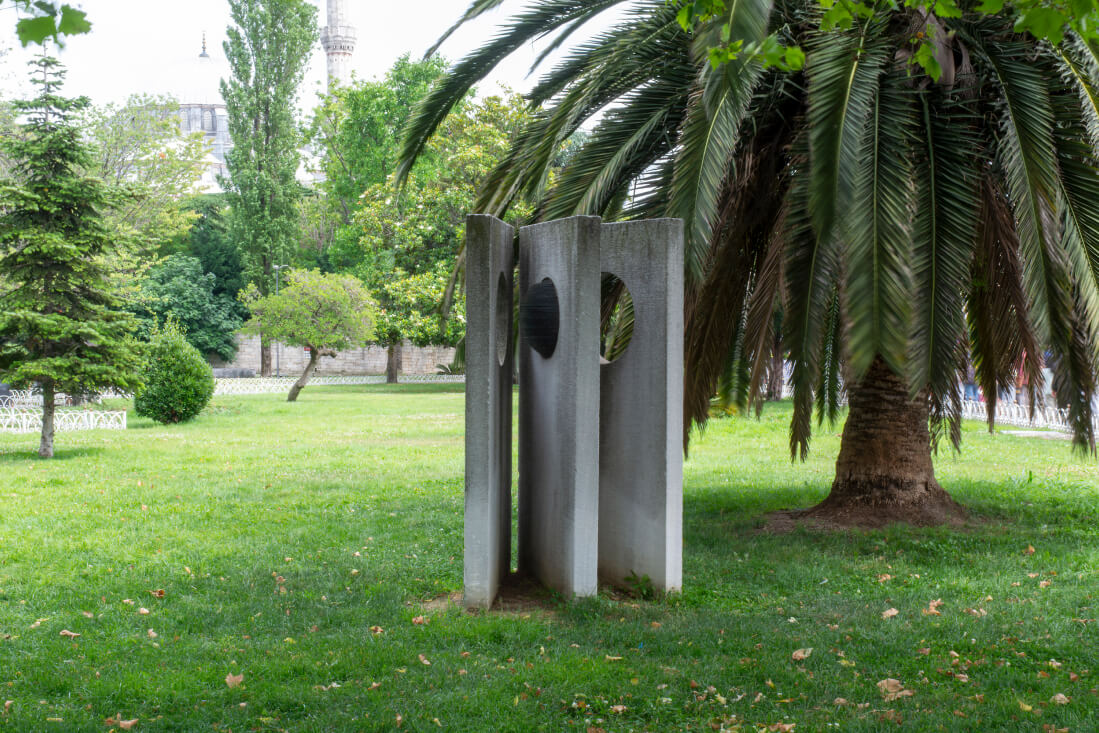 Handan Börüteçene’s “Istanbul Book” sculpture in Saraçhane Park, 1994. Photo: Mustafa Hazneci (Salt), 2023. |
The exhibition “In the Realm of Three Inland Seas,” providing viewers with a deeper understanding of Handan Börüteçene’s works and a closer look at the artist’s universe, transcends a typical art exhibition—it is a narrative of cultural heritage. Curated by Salt’s Amira Akbıyıkoğlu, the exhibition is accessible free of charge at Salt Beyoğlu until April 14. For information on public programs aligned with the exhibition, please visit the website.
